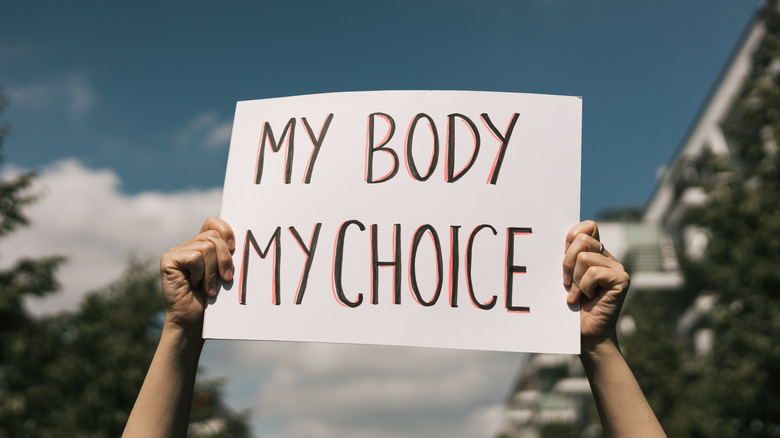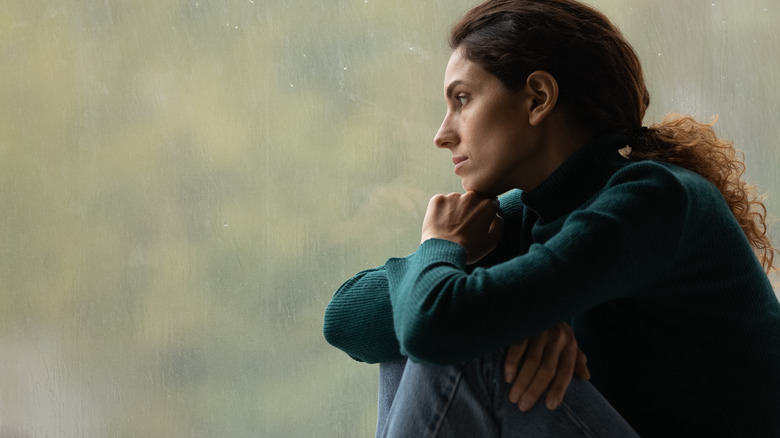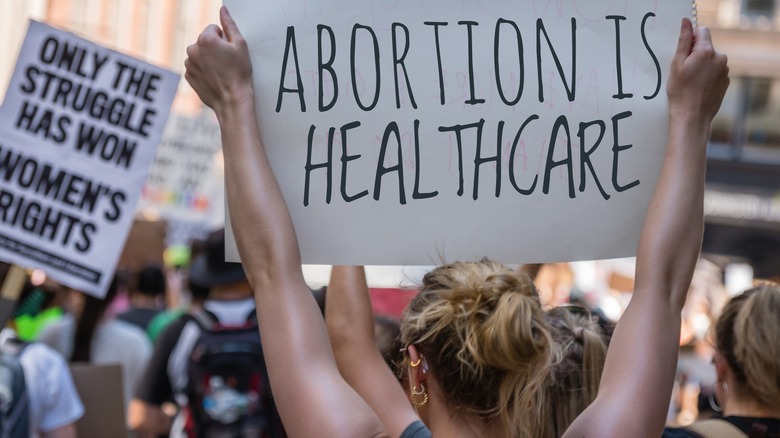Research Finds Concerning Statistic In Abortion-Restrictive States
When the Supreme Court ruled in Dobbs v. Jackson Health Organization in June, access to abortion care in the United States changed dramatically. Many states had trigger laws that went into effect as soon as it was clear Roe v. Wade was overturned, while others have been working in the months since to restrict and prohibit the procedure without exception.
However, in the years leading up to the reversal of Roe, states had already been limiting access to abortion and reproductive care through laws regulating abortion care centers and providers through what's known as Targeted Regulation of Abortion Providers (TRAP). On the surface, this can seem to have a patient's best interest in mind. Yet, according to medical providers, these laws are solely meant to shut down abortion facilities, making abortions difficult, if not impossible, to obtain (via NBC News).
If a patient cannot obtain an abortion, the birth of an unwanted or unexpected child is not the only consequence. UC San Francisco's landmark "Turnaway Study" found that pregnant people who were forced to give birth reported more life-threatening complications at the end of their pregnancies, as well as chronic pain and physical and mental health issues in a five-year period than patients able to have an abortion.
According to a study published this week in JAMA Psychiatry, there is also a troubling link between suicide rates in young women and abortion restrictions that has bigger implications for the long-term effects of the reversal of Roe.
If you or anyone you know is having suicidal thoughts, please call the National Suicide Prevention Lifeline by dialing 988 or by calling 1-800-273-TALK (8255).
Study finds abortion restrictions have links to rise in suicide rates in young women
Targeted Regulation of Abortion Provider (TRAP) laws not only perpetuates false claims that abortion is unsafe, but a new study found a 5.81% increase in annual suicide rates in states that passed TRAP laws between 1974 and 2016 (via JAMA Psychiatry). According to the study, annual average suicide rates increased only among women of reproductive age after TRAP laws were enforced.
According to NBC News, these laws can regulate everything from whether a doctor needs to be able to admit patients at a nearby hospital, to the size of the exam room, to the temperature of the building. However, given how few complications arise during abortions — less than .5% require hospitalization, per the Guttmacher Institute — providers often have difficulty staying affiliated with hospitals, forcing clinics to close.
The Supreme Court has ruled multiple times in the past that TRAP laws create unnecessary burdens for those seeking abortions: first in 2016, in the case of Whole Woman's Health v. Hellerstedt, and again in 2020, in June Medical Services, LLC, v. Russo. At the time, the number of abortion clinics in Texas and Louisiana — the states the laws were being challenged in — fell rapidly, tripling the number of patients who could not access abortion care within 100 miles of their homes (via Guttmacher Institute).
But with the Dobbs v. Jackson Health Organization decision, any federal protections for the right to abortion have been rolled back.
Studies are already showing the impact of the fall of Roe v. Wade
Currently, 13 states have banned abortion entirely or in nearly every circumstance, while others have bans tied up in their state supreme court systems (via Center for Reproductive Rights). Talking to NBC News, Nichole Austin, an assistant epidemiology professor at Dalhousie University, said she expected, "from a purely speculative point of view, that the recent Supreme Court decision would have a real individual-level impact on a lot of women in a way that these TRAP laws would not."
So far, the science backs up Austin's speculations. One study by the University of Texas at Austin found that travel time for patients seeking abortions had increased from 30 minutes in 2021 to 100 minutes in September 2022 as patients were forced to turn to out-of-state clinics to obtain abortion services. Abortion numbers in Texas may have dropped as a result of the restrictions, but the study shows patients did not abstain from seeking abortions but either traveled out of state or had a self-managed abortion at home.
Dr. Kari White, the lead author of the study, told KXAN that those who were unable to obtain an abortion were: "more likely to live in poverty, more likely to stay in relationships with unsafe partners, had poor health outcomes and their children were delayed in meeting developmental milestones." White added that their study showed abortion restrictions did not prevent unwanted pregnancies, only stopped people from accessing medical care.


